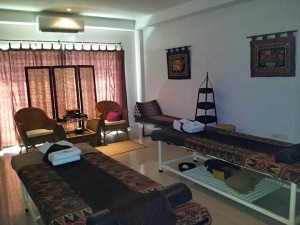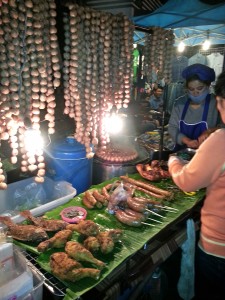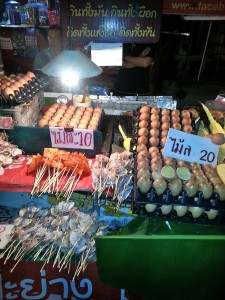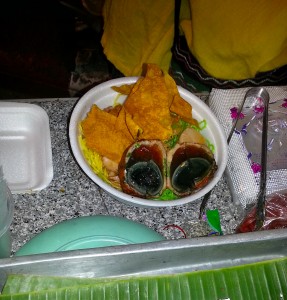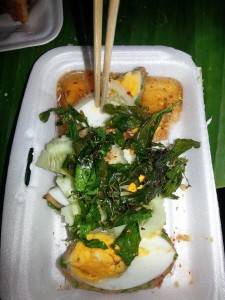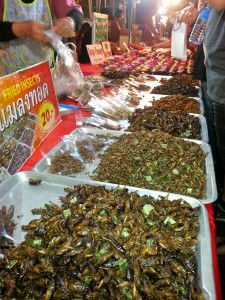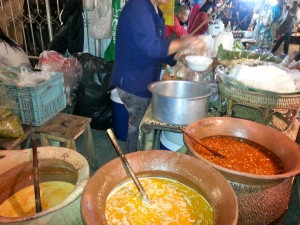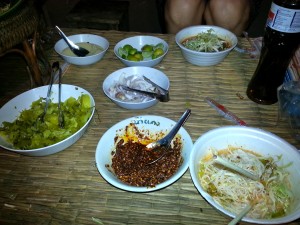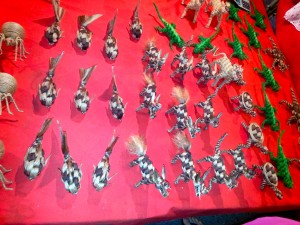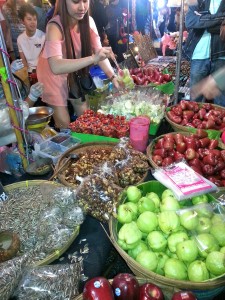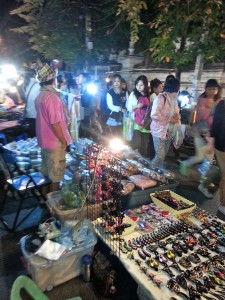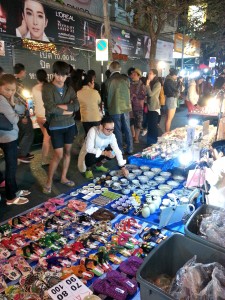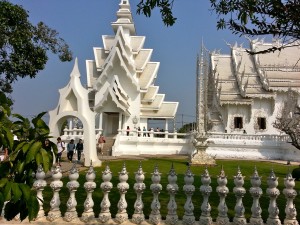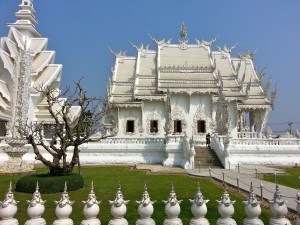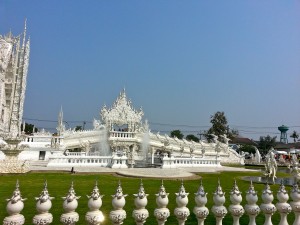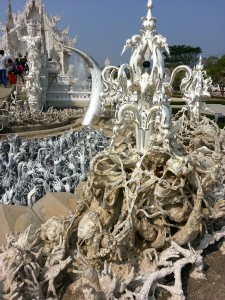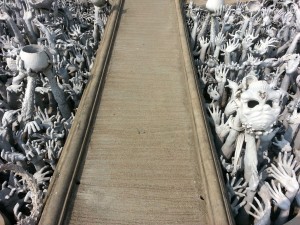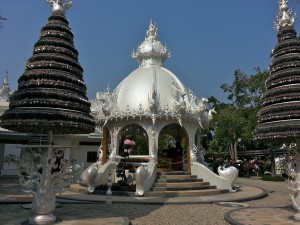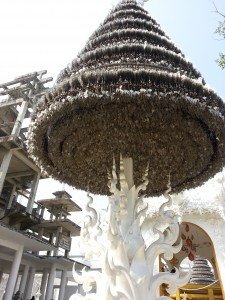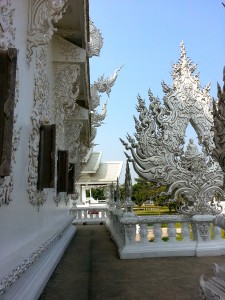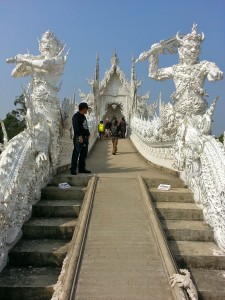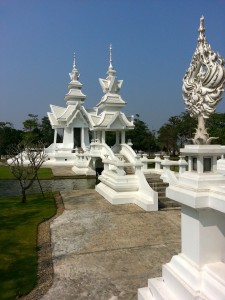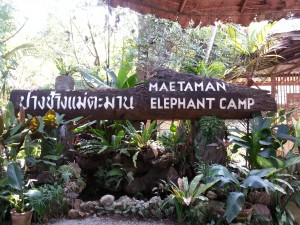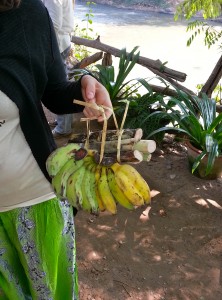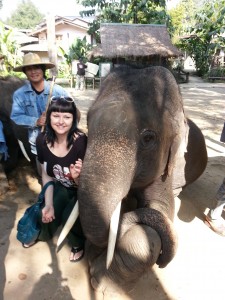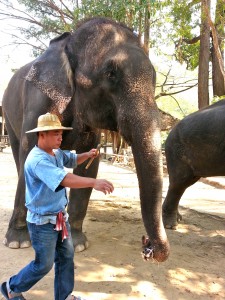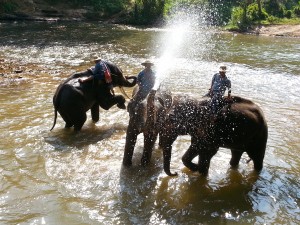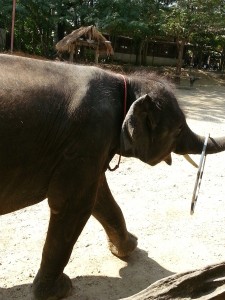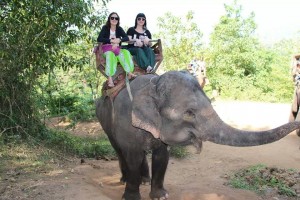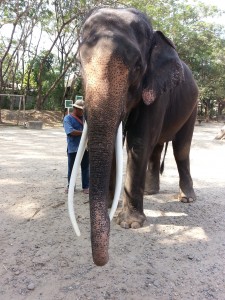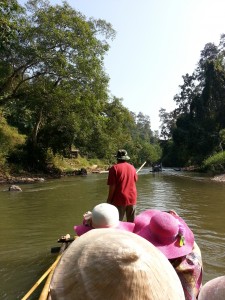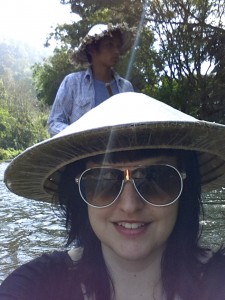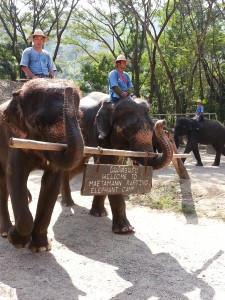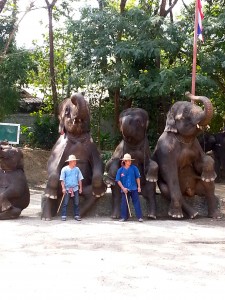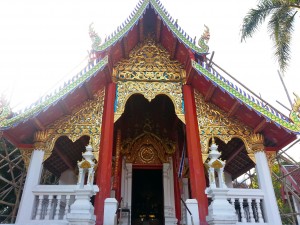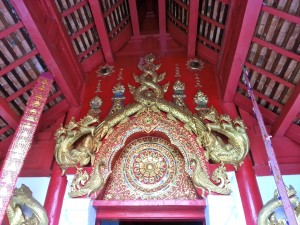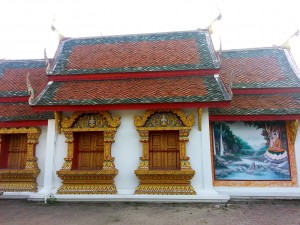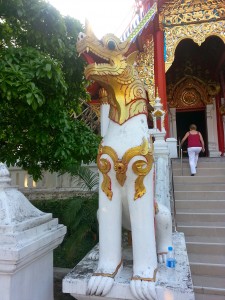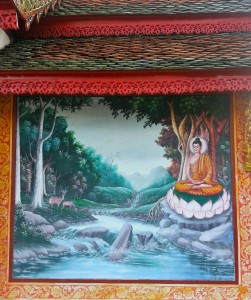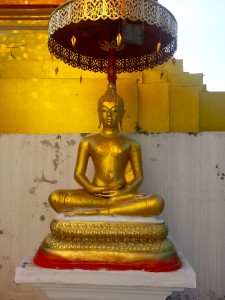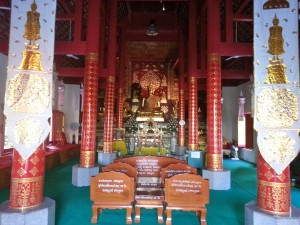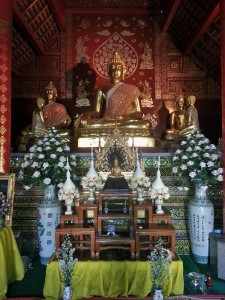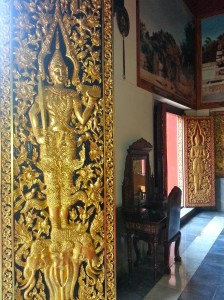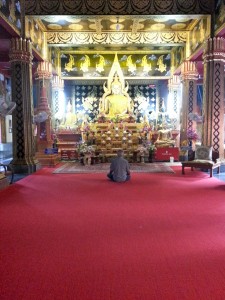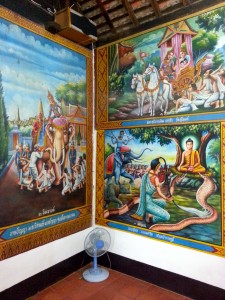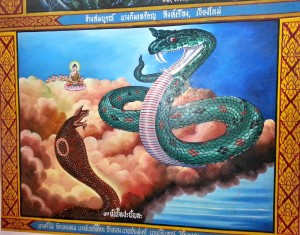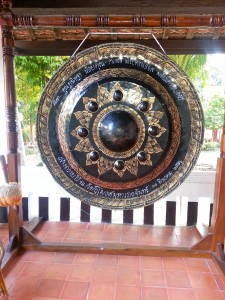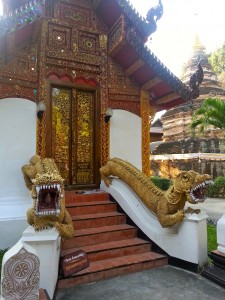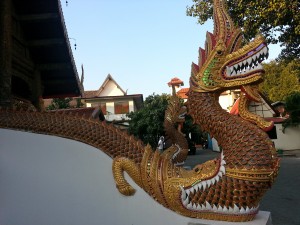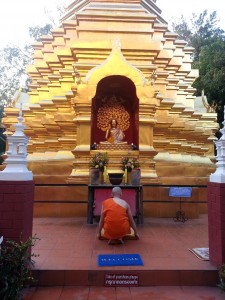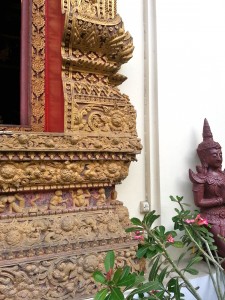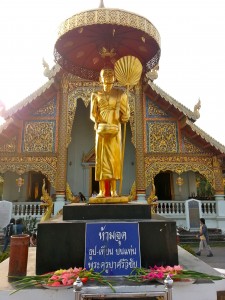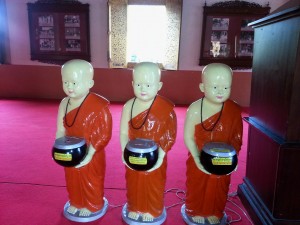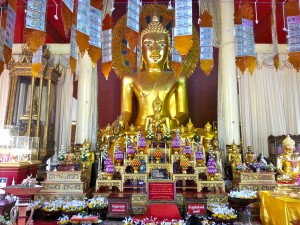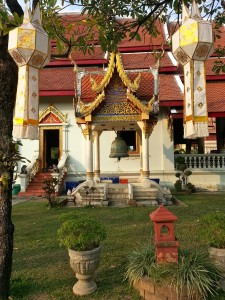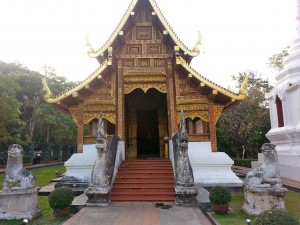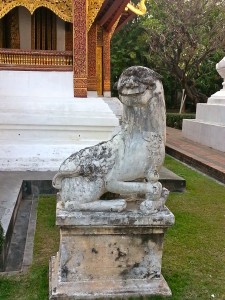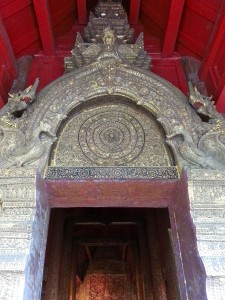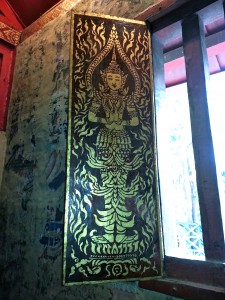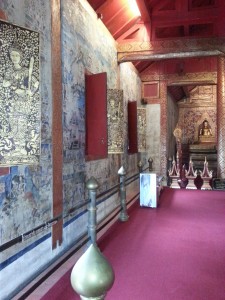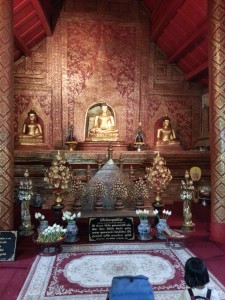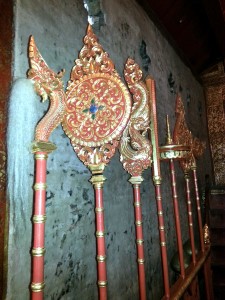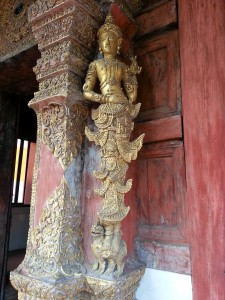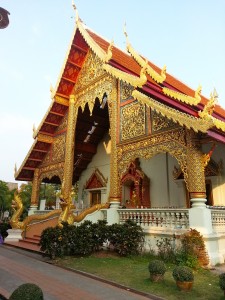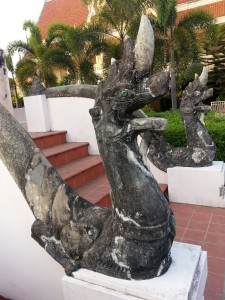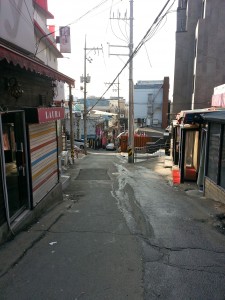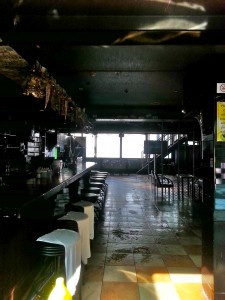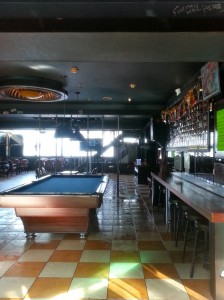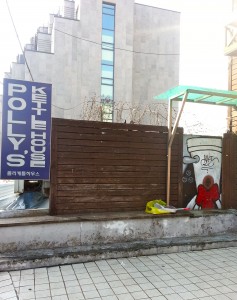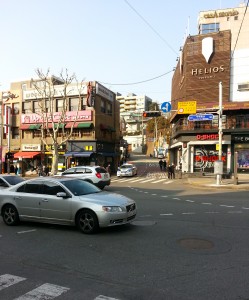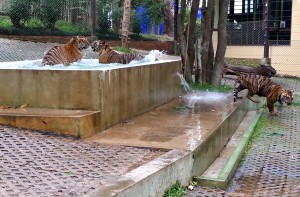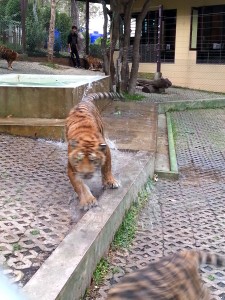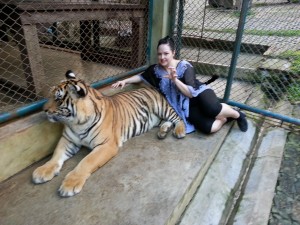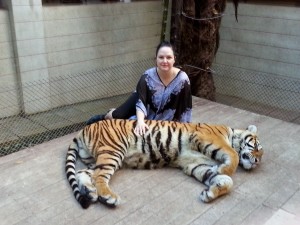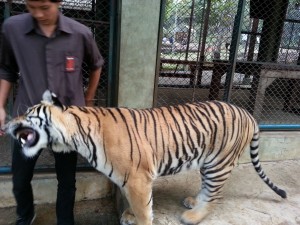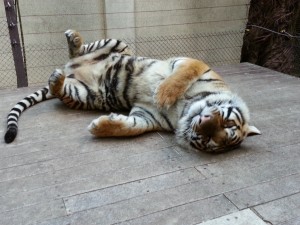The Sunday Market, also known as the Walking Street Market in the Old City of Chiang Mai is famous in northern Thailand. The market is quite famous because they showcase local wares from the people of Chiang Mai and their cooking too. I had been advised to check this out since I arrived on Tuesday, so when Sunday finally arrived, I was eager to see what was up.
Sunday was a lazy day that started around 2pm. My friend and I noticed the Sunday market was just getting set up so we decided to pass the time getting 2 hour massages. We got complimentary foot massages while we waited, then were taken up to the VIP room where we could get our pampering done in the same room. The place was clean and calming with relaxing music playing while we got pampered. There was an hour on our limbs and torsos, then an hour on our faces. The facial was like I’d never had before: complete with yogurt masks and a seaweed soak. Total cost for the 2 hours if I remember correctly was around $36, or 1,200 baht. There is no way you could get that pampered in the west for that little. Life was good in Thailand!
By the time we left the massage shop, the street was crawling with people and vendors had popped up to cover most of the sidewalks. The main road became our walking path since cars were denied entry for the night. The trinkets got repetitive after a while but the food was what made the market truly memorable for me. Aside from the beautiful hand-carved soaps, wooden jewerly boxes and many scarves and wraps, there were all kinds of meat in all kinds of shapes. There was meat on strings in balls, meat in squares on sticks, meat in bowls with soup and meat on grills with fruit.
There were things I’d never seen before and I tried as many foods as I could until I was full. I’m not much of a meat eater but my friend tried a variety of items and was not let down by any.
The market spread out across the open space by the Tha Pae Gate and sprawled all the way down Ratchadamnoen Road until Wat Phra Singh, one of the biggest and most beautiful buddhist temples in the Old City.
It should also be noted that there is a night bazaar every night in the Old City but it is not to be confused with the Walking Street Market. The Walking Street Market has an amazing spread of food, live entertainment and local, often hand-made souveniers, whereas the regular night bazaar has mostly just Thailand goods, trinkets and clothes that you tend to see over and over again. However if you miss a chance to catch the Walking Street Market and still want to do some shopping, many of the same items can be found for around the same price at the nightly bazaar. Just with less awesome food.
The Sunday Walking Street Market gave us a young girl performing traditional Thai dancing, a police officer (in uniform) playing guitar and singing outside the station and even a little dog riding a bike. He was more like balanced on the bike while his owner steered from behind with a remote control, but still – the show put on was hilarious. Overall it was a stimulating night for the all the senses. I’m glad I got to be there, even if for only one Sunday.
